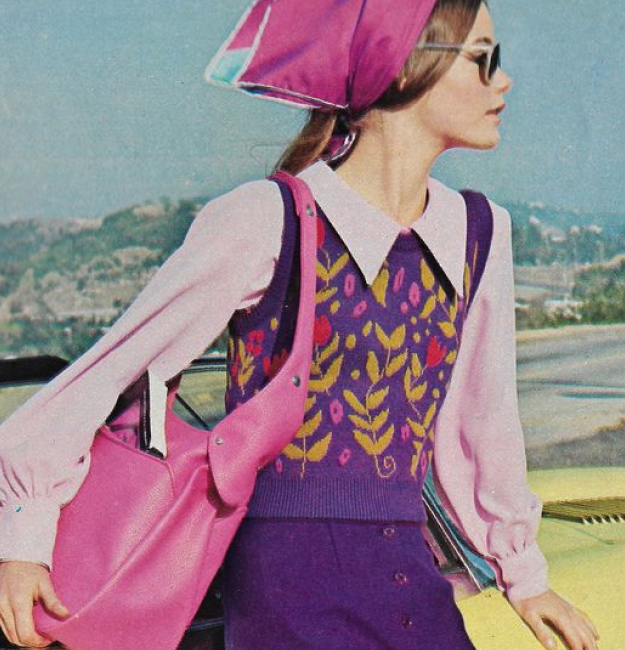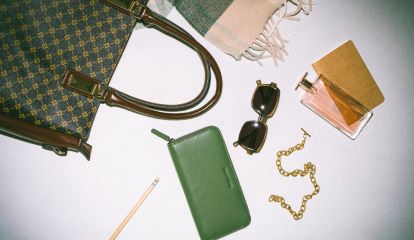The world of vintage fashion
The world of vintage fashion is like the whole other planet. It has its rules, definitions and history. In the last few years it became really popular to have some vintage pieces (like bags, dresses, jackets) in your wardrobe, and it is honestly a big shopping accomplishment if you’re able to find one for a reasonable price.
Instagram influencers and bloggers show their vintage items and get thousands of likes. But people still don’t really understand what can actually be considered vintage, where to find it and why is it so special? In this article, we’ll discuss which garments can legitimately be referred to as vintage, what’s the difference between old, retro, vintage, classic and antique clothing and why is it a good idea to have vintage pieces in your collection of clothes. Stay tuned!
Definition of vintage
First of all, let’s define what is the meaning of the word “vintage” according to the Cambridge dictionary.
It is an adjective used to describe something produced in the past, and typical of the period in which it was made. It can be any item: a car, a plane, a book, a dress or even a lamp.
What is vintage fashion?

If we’re talking specifically about fashion, the term “vintage” refers to clothing, jewellery, etc. that is not new, especially when it is a good example of a style from the past. The last part is crucial here – vintage items are actually the ones that are not just old, but they also serve as a time capsule for the exact era in which they were created. It means that it has the iconic fit of the decade, the one that makes you look at it and realize: “This swing dress is definitely from the 50s”!
But lots of fashionistas still argue and have different opinions about how old an item should be to become vintage. Most people think that any garment that represents a different era or social phase and is at least 40 years old but under 100 years old is considered vintage. For instance, a garment must have been produced between 1983 and 1923 in order to be regarded as vintage in 2023.
Differences between old things, vintage, antiques, classic, retro
These definitions are often mixed up in people’s heads, but it’s not that difficult to remember the difference. Let’s make it finally clear.
- What is considered to be vintage? To be qualified as vintage, an item must be at least 40 years old and in some way reflect the time period. It’s supposed to be an authentic piece like an 80s oversized collar dress, tie-dye tees of the 70s or a skirt suit from the 60s.
- What is considered to be antique? To be categorized as antique, clothing, accessories and other things must be 100 years old or more.
- What is considered to be classic? Pieces from more than 20-30 years ago that became iconic, but do not necessarily represent the era in which they were manufactured. The most famous example is a Little Black Dress. According to fashion historians, Coco Chanel's designs from the 1920s are where it all started.
- What is considered to be retro? These are contemporary (or maximum 20 years old) garments that imitate trends of the recent past. So basically it is a piece of clothes that can be created by modern designers or brands based on past fashion trends. It doesn’t have to fully copy vintage items, usually it is just inspired by them. Retro clothes are much easier to find and more affordable than vintage ones.
- What is considered to be old? These are previously used or worn things that do not go into any of the categories that were mentioned before. Without a doubt, they may also look stylish, but their main characteristic is that they were manufactured a long time ago and probably were already worn by someone else. It can be a simple old white t-shirt, a basic shirt or any other mass-market garment from old collections. As well as vintage clothes, it can be found in thrift stores or on the markets.
How to know what kind of clothes you buy?
Sometimes it’s still difficult to define what kind of clothes you’ve bought (either it’s vintage, retro or just old). To know for sure, you need to be educated in fashion history and trends, know the brands and even that might not be enough. If everytime you’re thrifting, you’re asking yourself a question about the origin and type of the garment, we might have a couple effective pieces of advice for you.
- Buy clothes in vintage stores with a good reputation. It might be more expensive than simple second-hand stores, but you will get a selection of items that are 100% vintage.
- Find a trusted reseller that can offer you his or her expertise and knowledge. In this case scenario you don’t even have to go shopping, cause usually they have everything posted online.
- Do your research. If you really care to widen your vintage clothes collection with some original pieces, try expanding your knowledge. Everytime you see a piece of clothes that you love, Google the brand, find out more about the era it’s referred to and check if it’s fake or not.
- Pay attention to premium-quality brands. If you’re looking for nice retro clothes and accessories with a contemporary vision, look it up on INTERTOP.COM. We have a variety of brands and many of them offer you retro pieces as well as classic ones for a reasonable price.
- Don’t be afraid to make mistakes. Sometimes sellers tell lies about an item being vintage. You’ll start figuring it out with an experience. Learn more about fashion and history, types of fabrics, the market and it’ll become easier with the time.
What clothes are not vintage?
Are there any signs that clothes that you picked are not vintage? Yes, and here are some of them.
- Pay attention to the labels. If it says “vintage” right on it, then it is probably not in reality.
- Check the origin of the item. If you live in Europe or the US, then the label “Made in China” is a sign that it was probably manufactured recently.
- Look at the details: buttons, linings and colors. They shouldn’t look cheap and worn-out.
What to look for when buying vintage clothing?
- Leather jackets
- Vintage denim
- Dresses
- Short-sleeved shirts
- Blouses
- Corsets
- Cowboy hats etc.
What makes vintage clothing so special?

So what all the fuss is actually about? Why are people ready to pay thousands of dollars for one vintage dress or a shirt?
To begin with, we’re living in a capitalistic society, where fast-fashion and overconsumption took over the world. Sometimes you walk the streets and see a person wearing the exact same piece of clothing, because they bought it in the same affordable store with bad-quality items as you did. So the first thing that vintage clothing offers you is uniqueness. Exploring your individuality and sense of style through vintage shopping is actually an amazing idea. Nobody will ever have the same outfit as you do, your looks will be exclusive and mind-blowing. And also anything vintage that you buy is gonna be a good investment, because usually these things are desirable by many people.
Secondly, it helps the environment. The less things you buy, the less natural and human resources are used for its manufacturing. When we reuse clothing and give it a second life, we produce less waste in the end.
Also, vintage clothes are mostly high-quality ones and those garments last much longer than mass-market pieces. Even though vintage clothes were worn before, there’s a greater possibility that it is made of high-quality materials and will look good even after a long time of wearing it. That’s because fast-fashion is a relatively new concept and back then in the 20th century fabrics and designs were much more appealing.
In conclusion to the question why you should buy vintage, every piece of your clothes will have its own background and story. It probably was owned a long time ago by someone who had the same sense of style as you have right now, or by someone who experienced something special in this garment.

